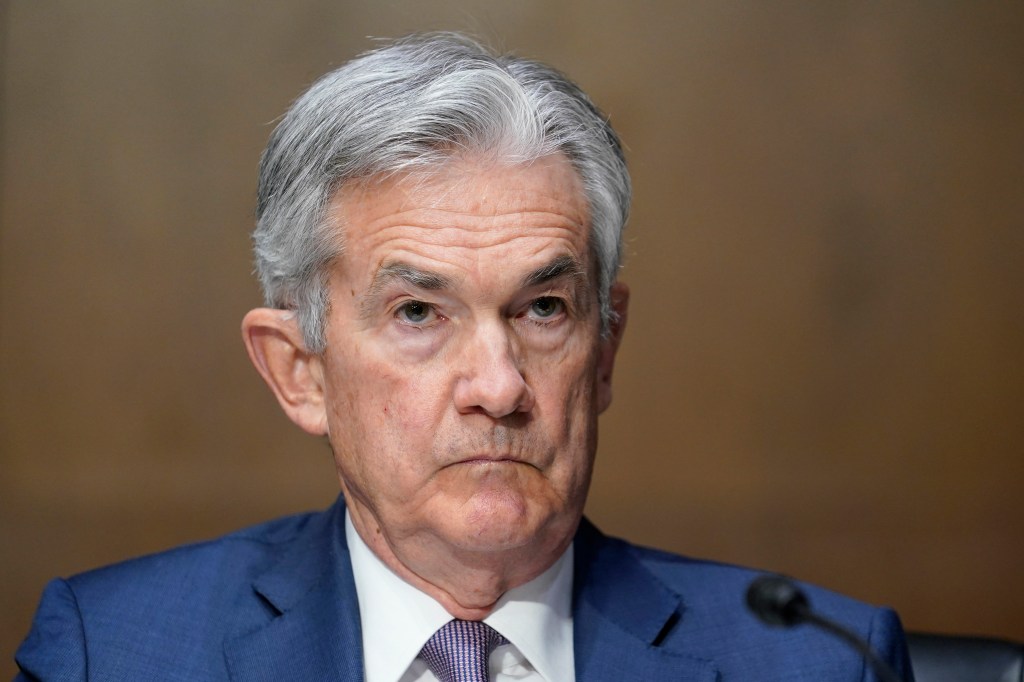WASHINGTON — Federal Reserve Chair Jerome Powell on Wednesday set the stage for the central bank’s first rate cut in four years, citing greater progress toward lower inflation as well as a cooler job market that no longer threatens to overheat the economy.
Still, the Fed kept its key interest rate unchanged at a 23-year high of 5.3%, despite calls from some economists and Democratic politicians to implement a cut Wednesday. Instead, Powell said that, if inflation continues to fall, “a reduction in our policy rate could be on the table” when the Fed next meets Sept. 17-18.
“We’re getting closer to the point at which it’ll be appropriate to reduce our policy rate,” Powell said, “but we’re not quite at that point.”
A rate cut by the Fed is unlikely to have much immediate impact because it is largely expected by financial markets. Yet over time, lower Fed rates should reduce borrowing costs for consumers and businesses, including mortgage and auto-loan rates.
Rate cuts could also bolster the economy and potentially improve Vice President Kamala Harris’ prospects in the upcoming presidential election. Former President Donald Trump has said the Fed shouldn’t cut rates before the election. After September, the Fed’s next meeting is two days after the election in November.
In a statement Wednesday, the Fed said that “job gains have moderated” and acknowledged that the unemployment rate has risen. The Fed is required by Congress to pursue stable prices and maximum employment, and the statement said the central bank is “attentive to the risks” to both goals.
The focus on both inflation and employment is a major shift after several years of Fed officials focusing exclusively on combatting rising prices.
“They’re ready to cut, just as long as we don’t get an inflation suprise between now and September, which we won’t,” said Mark Zandi, chief economist at Moody’s Analytics. “Better late than never.”
Before the Fed’s decision, financial market traders had priced in 100% odds that the central bank would reduce its benchmark rate at its Septermber meeting, according to futures markets. The Fed typically seeks to avoid surprising investors with its rate decisions.
Stocks added a bit to earlier gains and Treasury yields eased after the Federal Reserve held its main interest rate at a two-decade high but gave some indication that an easing may soon be on the way. The S&P 500 ended Wednesday up 1.6%.
The Fed is seeking to strike a delicate balance: It wants to keep rates high enough for long enough to quell inflation, which has fallen to 2.5% from a peak two years ago of 7.1%, according to its preferred measure. But it also wants to avoid keeping borrowing costs so high that it triggers a recession.
Powell portrayed the economy as in something of a sweet spot, with inflation falling and hiring occurring at a solid pace. At the same time, wage growth has cooled, which can reduce inflationary pressure in the economy, as many businesses will lift prices to offset higher labor costs.
“It’s neither an overheating economy nor is it a sharply weakening economy,” Powell said. “It’s kind of what you would want to see.”
Earlier Wednesday, a key gauge of wages grew more slowly in the second quarter, compared to the first three months of this year, though the increase was still faster than inflation.
“Wage increases are still at a strong level, but that level continues to come down to a more sustainable level over time,” he said. “That’s exactly the pattern than we want to be seeng.”
Yet with the unemployment rate ticking higher for three months in a row, some economists have raised concerns that the Fed should cut rates more quickly later this year.
“The finish line is in sight and it would be tragic for the Fed to stumble and fall, with one-tenth of a mile left in the marathon, which is what I think they would be doing if they don’t start cutting,” Bharat Ramamurti, an advisor at the American Economic Liberties Project and former economist in the Biden White House, said on a call Monday with reporters.
Also Wednesday, three Democratic senators, led by Elizabeth Warren from Massachusetts, urged Powell in a letter to cut rates. The letter charged that a failure to reduce borrowing costs soon would suggest the Fed is “giving in to bullying” and would itself be a political move.
Powell said Wednesday that the upcoming elections would have no influence on the Fed’s decisions.
“We don’t change anything in our approach to address other factors like the political calendar,” he said.
In the latest piece of good news on price increases, last Friday the government said that yearly inflation fell to 2.5% in July, according to the Fed’s preferred inflation measure. That is down from 2.6% the previous month and the lowest since February 2021, when inflation was just starting to accelerate.
At the same time, the unemployment rate has risen by nearly a half-percentage point this year to a still-low 4.1% and hiring has slowed.
The government will issue the latest jobs numbers on Friday, and economists forecast that it will say employers added 175,000 jobs in July, while the unemployment rate remained 4.1%.
The Fed may be among the last of the major central banks to cut its benchmark rate. The European Central Bank reduced borrowing costs in June and may do so again in September. The Bank of England meets Thursday and may implement its first cut, though economists think it could also keep rates unchanged.
The Bank of Japan is in a different boat, as the country has long sought higher prices after decades of slow deflation. Its inflation rate has moved higher and the Bank of Japan responded earlier Wednesday by increasing its key rate.
Originally Published:
